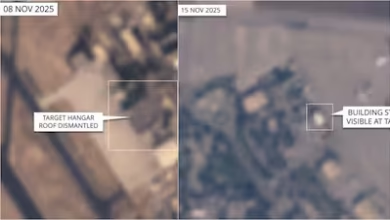Yemeni Houthi Rebels Claim Downing Another US-Made MQ-9 Reaper Drone

- The US Navy, which supervises the center, also acknowledged that the Houthis' most recent attack on a merchant ship occurred on September 2.
- The Houthis have demonstrated their willingness and ability to target US Navy assets and coalition partners
Houthi rebels in Yemen claimed on Monday that they had shot down an additional American-made MQ-9 Reaper drone over the country. Videos purportedly depict a surface-to-air missile striking the drone. The United States military did not immediately acknowledge the loss of any aircraft.
The alleged attack occurs as the one-year anniversary of the Israel-Hamas war in the Gaza Strip approaches. As US-led airstrikes bombard their positions in Yemen, the Houthis have targeted ships transiting the Red Sea during the conflict. This has jeopardized a waterway that is regularly used to transport USD 1 trillion in trade and is essential for the delivery of humanitarian aid to the war-torn countries of Sudan and Yemen.
This weekend, the Israelis conducted retaliatory airstrikes on the port city of Hodeida in response to the Houthis’ ongoing missile launches that specifically targeted Israel.
Hours after video footage of the alleged missile striking the aircraft over Yemen’s Saada province circulated online, the Houthi-controlled broadcaster Al-Masirah claimed to have shot down the MQ-9. The drone’s wreckage was also depicted in a single online image, with pieces that resembled those of a MQ-9.
A request for comment from The Associated Press was not responded to by the US military.
General Atomics Reapers, which are priced at approximately $30 million each, are capable of operating at altitudes of up to 50,000 feet and possess a 24-hour endurance period before requiring a landing. For years, the US military and the CIA have operated the aircraft over Yemen.
The US military has observed Reapers being shot down in Yemen in 2017, 2019, 2023, and 2024 since the Houthis seized the country’s north and its capital of Sanaa in 2014. In September, the United States military acknowledged that the Houthis had shot down two MQ-9s.
Since the outbreak of the Gaza conflict in October, the Houthis have employed drones and missiles to target over 80 merchant vessels. Four sailors were killed during the campaign, which also resulted in the seizure of one vessel and the sinking of two. Other missiles and drones have either been intercepted by a US-led coalition in the Red Sea or have failed to reach their intended targets, which have included Western military vessels.
The rebels maintain that they target ships associated with the United States, the United Kingdom, or Israel in order to compel Israel to cease its campaign against Hamas in Gaza. Nevertheless, a significant number of the vessels that were attacked have no apparent connection to the conflict, including those that are en route to Iran.
Among those attacks was a barrage that struck the Greek-flagged oil tanker Sounion in the Red Sea. Salvagers have towed away the burning oil tanker in an effort to prevent a catastrophic leak of the 1 million barrels of oil that are on board. The Joint Maritime Information Center reported on Monday that the operation to extinguish some fires and control others onboard the Sounion has progressed with promising results since last week.
The US Navy, which supervises the center, also acknowledged that the Houthis’ most recent attack on a merchant ship occurred on September 2. However, the rebels continue to pose a threat.
The Houthis have demonstrated their willingness and ability to target US Navy assets and coalition partners, despite a decrease in attacks against merchant vessels over the past two weeks, according to the center. Last week, the Houthis asserted that an attack was directed at American warships.







Facebook Comments